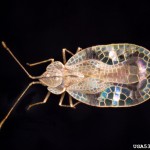When is it the right time to spray that bug? As winter wanes and spring approaches, the same insect pests generally wreak the same havoc on the same plants year in and year out.  But circling the same day on the calendar each year to anticipate and prevent these pest problems is a recipe for failure. Unfortunately, insects do not read the textbooks or follow our calendar. They are part of an intricate system of weather and environmental conditions that determine their arrival. However, there are a few clues that nature provides that can help us determine more accurately when a pest will emerge and become an issue.
But circling the same day on the calendar each year to anticipate and prevent these pest problems is a recipe for failure. Unfortunately, insects do not read the textbooks or follow our calendar. They are part of an intricate system of weather and environmental conditions that determine their arrival. However, there are a few clues that nature provides that can help us determine more accurately when a pest will emerge and become an issue.
A phenological indicator is a clue from nature that can help us determine how certain plant and insect life cycles overlap and how they are influenced by variations in climate. As spring comes early some years and late in other years, calendar dates become meaningless. But many times a plant’s bloom time overlaps or coincides with an insect’s emergence. These clues can help us determine when to begin to monitor and treat plants for insect problems with greater accuracy. As an example, the time to treat lilacs for a borer infestation is the time when Spiraea x vanhouttei is blooming. An ounce of prevention is worth a pound of cure, treating insects at the right time is critical.
Another technique for good timing is the use of growing degree days (GDD). GDD are a measurement of heat accumulation. They are the average of the high and low temperatures for each day minus a base of 50. The concept behind this is that very little development in plant or insect biology happens below 50 degrees. In spring, GDD accumulate rather slowly and in summer they accumulate rapidly. Based on your location, you can use growing degree days to monitor and predict when certain plants will flower as well as when certain insects will emerge.
Common examples of Phenological and Growing Degree Day indicators:
- When Koreanspice viburnum blooms Azalea lace bug emerges; or at 266 GDD.
- When black locusts are in bloom Emerald Ash Borer emerges; or at 550 GDD.
- When linden trees are in bloom Japanese Beetles emerge; or at 970 GDD.
This list is not all inclusive or without its shortcomings, but can serve as a fairly reliable benchmark to track bloom time and insect development. More information can be found online about phenological indicators and there are even apps that will now track GDD based on your location.
These two tools can help gardeners plan for and anticipate pest outbreaks in the garden. They also allow us to coordinate our services for clients all over the Indianapolis metro area and ensure our timing is correct for the pest we are trying to treat. If you would like more information about phenological indicators or GDD or about controlling pests in your landscape, feel free to contact the knowledgeable staff at Mark M. Holeman.
